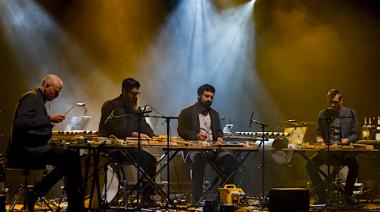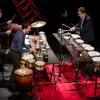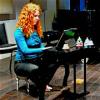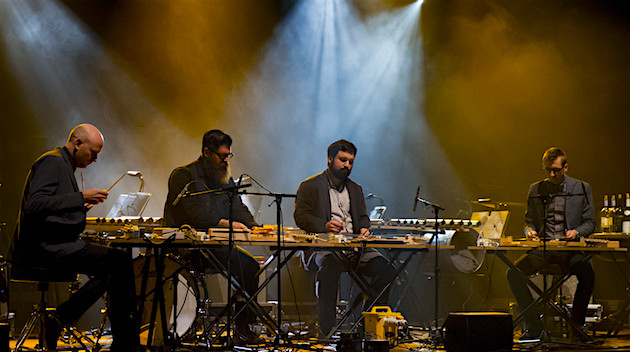
My dad always said the fade-out was the laziest way to end a song. I listened to a lot of ’90s pop, and so it hurt me that he was right.
Now that I hear a lot of premieres, lazy, episodic writing might just be my musical pet peeve. For the composer, I can see how converging episodes are an attractive deal: no need to figure out how to really end an idea, plus extra room for more! But for listeners, the effect often feels tacked on, and one bad section can drag down the good stuff that’s come before.
From a compositional standpoint, there were a few questionable episodes on Sunday’s program (“The Keyboard Reimagined,” at Cal’s Hertz Hall), but I was always rooting for Sō Percussion. The quartet (Eric Cha-Beach, Josh Quillen, Adam Sliwinski, and Jason Treuting) engaged so enthusiastically and unpretentiously with the audience, I wanted to love everything they played.
It was often easy. Throughout Broken Unison’s nine sections, Donnacha Dennehy ’s counterpoint creates fascinating rhythmic and harmonic patterns. Pitches slither through black- and white-key areas, while the long-ringing tones create sharp major-minor chords. Progressively, the episodes build anticipation of an eventual convergence — but proximity doesn’t make the music any less complex.
I also liked the first groove, of many, in Vijay Iyer’s sprawling Torque. Like a cross-armed cohort of unison dancers, the four players cluster around a single marimba with a collective, meandering lull. When the hands double, the sound blossoms. In other sections, Iyer’s layering sounds a little like a beginner with a loop pedal: the effect is almost impressive when the materials come together, and yet they’re not really much, on their own.
There’s a particularly stunning section in Treuting’s Nine Numbers 4. Triplets in the bass create a wistful chacony (it does sound English!) and when the range drops, it’s as if the world has suddenly given out. There’s a beautiful pointillism of two bowed “keyboard” instruments — and then, a more vigorous parade of notes without much significance, and some counting, and some talking. (There’s more talking in Caroline Shaw’s Taxidermy, an otherwise lovely piece with flowerpots.) And then I remember that the work’s inspiration is Sudoku, the puzzle that measures performance in an ultra-specific system that will never come in handy.
Two compact works for variously prepared pianos allowed for more focused listening experiences. Old and new technologies blur in “Undertow,” an etude — effectively performed by Sliwinski — for prepared digital piano by Dan Trueman. From sunny, pastoral chords, creeping microtonality seems particularly at odds with the instrument’s sterilely reverberant tone. At first, these notes sound like those of an old upright that’s seen too much sun; later, mordent gestures remind me of the baroque tempered tunings, which made certain keys on the harpsichord impractically sour.
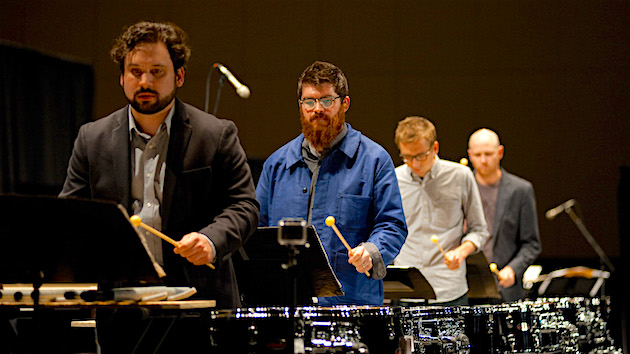
The sound of Suzanne Farrin’s a diamond in the square, on the other hand, is delightfully abstract. Gentle white-key clusters periodically come down over the scrubbing and scraping of the piano’s revealed strings.
Farrin’s title refers to the ubiquitous quilting motif (you’ve seen it), but even more, the intricate trails that thread these shapes together. Indeed, there’s something collective about the way that the quartet works at the single instrument, which has enough features to keep everyone busy. Physically, the motions are striking: I notice the awkward way the players’ backs bend as they reach, the effort it takes to floss the strings. The music itself is like the wrong side of an embroidery hoop: messy and remarkable.

